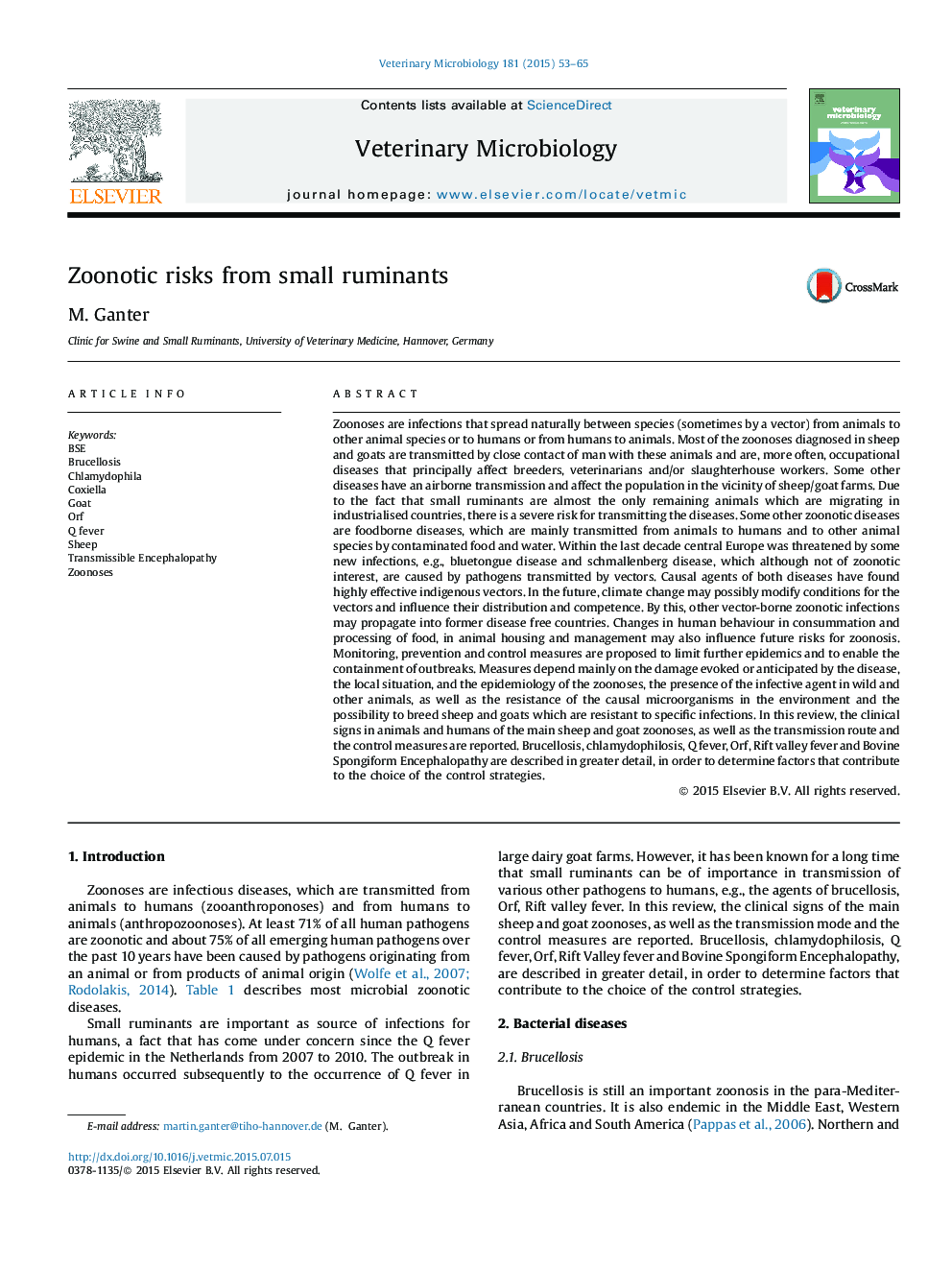| کد مقاله | کد نشریه | سال انتشار | مقاله انگلیسی | نسخه تمام متن |
|---|---|---|---|---|
| 5799749 | 1555343 | 2015 | 13 صفحه PDF | دانلود رایگان |
Zoonoses are infections that spread naturally between species (sometimes by a vector) from animals to other animal species or to humans or from humans to animals. Most of the zoonoses diagnosed in sheep and goats are transmitted by close contact of man with these animals and are, more often, occupational diseases that principally affect breeders, veterinarians and/or slaughterhouse workers. Some other diseases have an airborne transmission and affect the population in the vicinity of sheep/goat farms. Due to the fact that small ruminants are almost the only remaining animals which are migrating in industrialised countries, there is a severe risk for transmitting the diseases. Some other zoonotic diseases are foodborne diseases, which are mainly transmitted from animals to humans and to other animal species by contaminated food and water. Within the last decade central Europe was threatened by some new infections, e.g., bluetongue disease and schmallenberg disease, which although not of zoonotic interest, are caused by pathogens transmitted by vectors. Causal agents of both diseases have found highly effective indigenous vectors. In the future, climate change may possibly modify conditions for the vectors and influence their distribution and competence. By this, other vector-borne zoonotic infections may propagate into former disease free countries. Changes in human behaviour in consummation and processing of food, in animal housing and management may also influence future risks for zoonosis. Monitoring, prevention and control measures are proposed to limit further epidemics and to enable the containment of outbreaks. Measures depend mainly on the damage evoked or anticipated by the disease, the local situation, and the epidemiology of the zoonoses, the presence of the infective agent in wild and other animals, as well as the resistance of the causal microorganisms in the environment and the possibility to breed sheep and goats which are resistant to specific infections. In this review, the clinical signs in animals and humans of the main sheep and goat zoonoses, as well as the transmission route and the control measures are reported. Brucellosis, chlamydophilosis, Q fever, Orf, Rift valley fever and Bovine Spongiform Encephalopathy are described in greater detail, in order to determine factors that contribute to the choice of the control strategies.
Journal: Veterinary Microbiology - Volume 181, Issues 1â2, 14 December 2015, Pages 53-65
